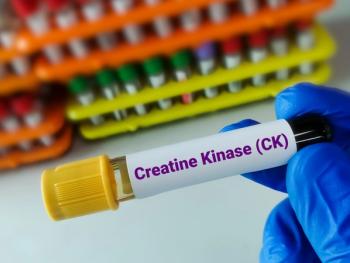
Study Suggests Respiratory Care Knowledge Gap Among DMD Caregivers
Many parents said they were afraid of noninvasive ventilation, with some citing inaccurate concerns about ventilation devices.
As new therapies become available to extend the lives of patients with Duchenne muscular dystrophy (DMD), a new report is highlighting the importance of educating caregivers on respiratory interventions.
Eliza Wasilewska, M.D., Ph.D., of the Medical University of Gdansk, Poland, and colleagues said the extension of life expectancy for patients with DMD has brought about new challenges for caregivers. One of the major challenges, they said, is managing respiratory function as the patient’s respiratory muscles grow weaker and weaker.
Proactive measures like rehabilitation, airway clearance, and noninvasive ventilation can reduce the risk of respiratory failure, Wasilewska and colleagues said, particularly if they are initiated in a timely manner. Non-invasive ventilation, in particular, can have a major impact on patients’ quality of life, they added, and reduce the risk of hospitalization.
“However, the successful implementation of pulmonary care interventions depends not only on healthcare professionals but also on the role of caregivers, especially parents, who are often responsible for monitoring and managing the pulmonary care at home,” said Wasilewska and colleagues in a new study
The investigators said previous research has indicated a significant knowledge gap among parents and caregivers with regard to respiratory care.
To better understand the existing knowledge gap and its clinical implications, the investigators conducted a cross-sectional survey at the Center for Rare Diseases in Gdansk, which houses a World Duchenne Organization-accredited DMD program.
The authors asked 111 parents of children with DMD to complete a survey asking them about their pulmonary healthcare practices, understanding of pulmonary rehabilitation, and knowledge of noninvasive ventilation, among other topics.
Three-quarters of parents said their child regularly visits a pulmonary specialist to be assessed using spirometry. Most parents were found to have satisfactory knowledge of respiratory issues, Wasilewska and colleagues said.
However, 77% of parents had insufficient knowledge of noninvasive ventilation, the authors found. Seventy-three percent said they were afraid to use noninvasive ventilation, citing a lack of information or inaccurate information. When asked to elaborate on their fears, 9% of parents said they worried their child’s lungs would become dependent on the machine and therefore grow weaker. Eight percent said they felt using ventilation would make their lives more difficult. Four percent said they thought their child was too sensitive for the device. Only 4% of respondents said they were currently using noninvasive ventilation.
That’s notable in part because the most commonly reported source of information about pulmonary care was healthcare professionals. About one-quarter (27%) of parents said they got information from medical conferences, and 5% said they got information from other families.
“Surprisingly, the Internet — often a widely accessible resource for medical information — was underutilized in this context,” Wasilewska and colleagues said, noting that just 5% of parents surveyed said they use the Internet to find pulmonary care information.
Although the Internet is often seen as a source of misinformation, the authors noted that resources from parent groups and patient-advocacy organizations are most easily accessed online. The authors said one issue for their study population might be a language barrier because some DMD organizations do not offer Polish translations of their materials.
With regard to noninvasive ventilation, Wasilewska and colleagues said they were surprised to find that more than half of the respondents whose children were eligible for noninvasive ventilation cited their doctors as the main source of their knowledge on pulmonary issues.
“Perhaps physicians should also have educational programs on… how to communicate with parents and patients at risk of respiratory failure and requiring respiratory support,” the authors said.
Wasilewska and colleagues said some of their findings might be culturally specific, and so the concerns and knowledge gaps they identified may not be representative of the wider DMD caregiver population. Still, they said these data highlight the urgent need for educational programs that specifically target knowledge gaps like these.
Newsletter
Get the latest industry news, event updates, and more from Managed healthcare Executive.






















































